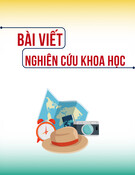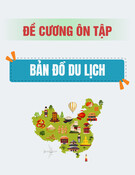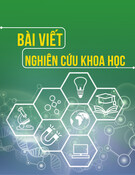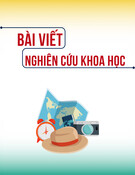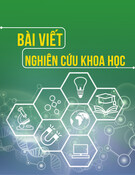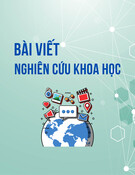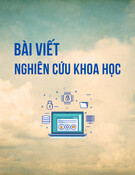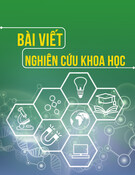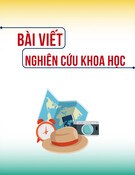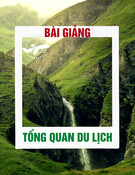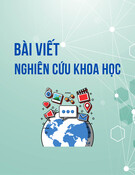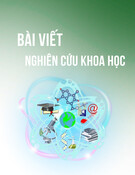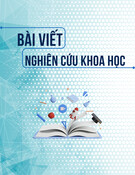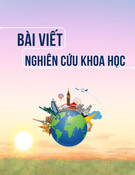
Hue University Journal of Science: Economics and Development
pISSN 2588-1205;eISSN 2615-9716
Vol. 133, No. 5C, 2024, pp. 25–42, DOI: 10.26459/hueunijed.v133i5C.7499
INVESTIGATING THE EVOLUTION OF SMART TOURISM
TECHNOLOGY AND TOURISM DESTINATION IMAGE:
A BIBLIOMETRIC ANALYSIS
Duong Thanh Tung1, 2, *, Nguyen Thi Bich Ngoc2, Dang Thi Nga2
1 Nguyen Tat Thanh University, 300A Nguyen Tat Thanh St., Ward 13, District 4, Ho Chi Minh city,
Vietnam
2 School of Hospitality and Tourism, Hue University, 22 Lam Hoang St., Hue, Vietnam
* Correspondence to Duong Thanh Tung <dttung.dl23@hueuni.edu.vn>
(Submitted: May 13, 2024; Accepted: September 16, 2024)
Abstract. This study investigates the development of smart tourism technology (STT) and tourism
destination image (TDI), identifying trends and research gaps in relation to STT and TDI. The article employs
a rigorous PRISMA Statement methodology to curate a dataset of 4,371 of the most reliable articles from two
databases: Scopus and Web of Science, spanning from 1986 to 2024. This paper employs mixed methods,
primarily quantitative bibliometric methods utilizing the Biblioshiny tool. Findings reveal that the annual
scientific output on STT and TDI peaked at 666 articles in 2023, with a projected upward trend. The
integration of emerging technologies such as metaverse, gamification, digital twin, smart media, augmented
reality, and virtual reality with TDI gives rise to exciting research gaps. This study is unique and valuable
since it divided the time period into four different slices, from 1986 to 2024, and used the Biblioshiny to
create a longitudinal thematic analysis map. This research presents emerging topics, targeting key trends in
STT and TDI.
Keywords: Smart tourism technology, Smart tourism, Tourism destination image, Bibliometric, Biblioshiny
1 Introduction
It can be seen that in the Fourth Industrial Revolution, the application of technology in the
tourism industry has led to the emergence of a new concept called smart tourism [1]. Smart
tourism refers to the use of information and communication technology (ICT) to enhance tourism
products, services, and experiences [2–4]. Smart tourism is a comprehensive approach to
providing tourism information and related services conveniently to tourists through information
technology devices [5, 6].
Smart tourism technology (STT) is the application of ICT in physical systems [7, 8], to
explain the use of technology for tourism service providers and organizations to provide better
experiences for tourists and enhance the competitiveness of destinations [9–12]. STT is an
advanced technological tool that, in the context of tourism, can add value to tourists by providing
interaction, co-creation, and personalization, thus leading to improved tourism experiences





